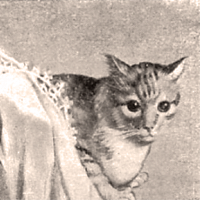You will begin to note some similarities in the influences on needlework in Italy. Punto Avorio is used in Umbrian Embroidery which was created from studying ancient Arab embroideries and Puncetto needlelace is thought to have come to Italy through Arab influence.
Both Punto Avorio and Punto Ricciolino (which we looked at yesterday) are mentioned in a pamphlet from Marquess Romeyne Robert's Arti Decorative Italiane shop.
"The specialty of the School [Ranieri di Sorbello Embroidery School] is a knotted raised stitch of which there are many variations... to augment the effect of its embroidery, the School often uses inserts of Ivory Stitch which is one of the oldest needle lace stitches also brought to Italy by the Arabs. It is called Ivory Stitch because the lace motifs were copied from the ivory grates used in front of the windows of the harems. Although the stitches are Arab, the designs are Italian from the Renaissance period and the whole character of the work is Italian [referring to Umbrian Embroidery]."
In my little sampler, I have used Punto Avorio in two different ways so far. Once as a filling stitch for the little circle in the bottom right corner of the photo:

... and once spaced farther apart for these curlycues:

It is a nice stitch for the curlycues as it creates a raised line and also as a filling stitch as it is very compact. When I get to finishing the edging of the sampler, I'll show you some more characteristic ways that Umbrian Embroidery uses Punto Avorio.
The difference in execution of Punto Avorio is also interesting. In Umbrian Embroidery, it is done with the needle going towards the embroiderer (as in the photo above) but in Puncetto needle lace it is done with the needle going away from the embroiderer.
Check out some of the antique Umbrian Embroidery collection at the Palazzo Sorbello or a modern interpretation here and here.





I love so much these knotted raised stitches (Ivory stitch or Punto Ricciolino) that look like a little rope or twine.
ReplyDeleteThe Palestrina stitch is similar as well our Portuguese Ponto grilhão. I haven't found the English name for it when I wrote about a while ago... maybe all have the same origin?
Thank you for your research and for sharing all your knowledge with us - I wish I know how to do the same...
This is very similar to the 'coral' stitch
DeleteHi Meri,
ReplyDeleteSome people have written to tell me that I have explained this stitch incorrectly. I am working to figure out the right way and will post again soon.
Meanwhile I really like the effect of this one!
I think that the Palestrina, and the ponto grilhão must be related. I love knotted stitches!